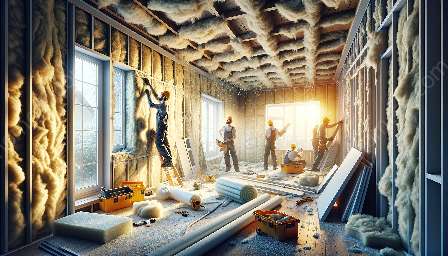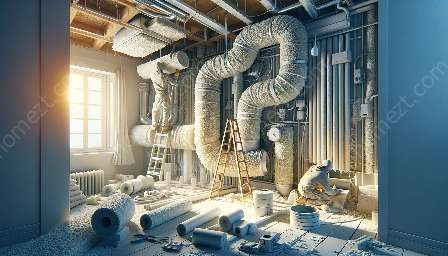Insulating ductwork and pipes is a critical aspect of home improvement and energy efficiency. It not only helps in maintaining the desired temperature, but also prevents heat loss, minimizes energy consumption, and reduces utility bills. This article explores the benefits of insulating ductwork and pipes, the different types of insulation materials, and the step-by-step process of insulating ductwork and pipes.
Benefits of Insulating Ductwork and Pipes
Insulating your ductwork and pipes can offer a range of benefits that significantly impact the comfort and efficiency of your home. By insulating these components, you can:
- Minimize Energy Loss: Proper insulation reduces heat loss and prevents energy waste, allowing your HVAC system to operate more efficiently.
- Improve Energy Efficiency: Insulation minimizes the need for constant heating or cooling, which can lead to lower energy consumption and cost savings.
- Enhance Comfort: Insulated ductwork and pipes help maintain consistent temperatures throughout your home, ensuring a comfortable living environment.
- Prevent Condensation: Insulation acts as a barrier against condensation, which can help to prevent moisture-related issues such as mold and mildew.
- Reduce Noise: Insulating ductwork and pipes can help to minimize the transmission of noise, providing a quieter living space.
Types of Insulation Materials
There are various insulation materials available for insulating ductwork and pipes, each with its own unique properties and suitability. Some common insulation materials include:
- Fiberglass: This type of insulation is made of fine glass fibers and is commonly used for insulating both ductwork and pipes due to its effectiveness and affordability.
- Foam Board: Rigid foam boards are often used to insulate ductwork and pipes, providing excellent thermal resistance and moisture protection.
- Mineral Wool: This type of insulation is composed of natural rock or steel slag fibers and is known for its fire resistance and high-temperature tolerance, making it suitable for insulating high-heat areas.
- Reflective Foil Insulation: Reflective foil insulation consists of foil-encased bubble wrap and is effective in reflecting radiant heat, making it suitable for insulating ductwork in attics and other high-heat areas.
Steps for Insulating Ductwork and Pipes
Insulating ductwork and pipes can be a DIY project or carried out by a professional, depending on the complexity and accessibility of the components. Here are the general steps for insulating ductwork and pipes:
- Assessment: Begin by assessing the existing condition of the ductwork and pipes, identifying any leaks, gaps, or areas in need of repair.
- Cleaning and Preparation: Thoroughly clean the ductwork and pipes to remove any dust, debris, or contaminants. Ensure that the surfaces are dry and free from moisture.
- Selection of Insulation: Choose the appropriate insulation material based on the location, temperature requirements, and other environmental factors.
- Measuring and Cutting: Measure the dimensions of the ductwork and pipes to determine the required insulation size. Cut the insulation material to fit the specific dimensions.
- Installation: Carefully wrap or secure the insulation around the ductwork and pipes, ensuring a snug and secure fit. Use fasteners or adhesive as needed to hold the insulation in place.
- Sealing: Seal any seams, joints, or connections using appropriate sealants or tape to prevent air leakage and ensure airtight insulation.
- Inspection: Conduct a thorough inspection to ensure that the insulation is properly installed and that there are no gaps or areas of heat loss.
- Monitoring: Regularly monitor the insulated ductwork and pipes to check for any signs of damage, wear, or deterioration, and perform necessary maintenance as required.
Conclusion
Insulating ductwork and pipes is an essential aspect of home improvement, contributing to energy efficiency, cost savings, and enhanced comfort. By understanding the benefits of insulation, the available materials, and the insulating process, homeowners can make informed decisions to upgrade and optimize their home's energy performance. Whether as a DIY project or with professional assistance, insulating ductwork and pipes can significantly improve the overall quality of a home's indoor environment and contribute to sustainable living.





















